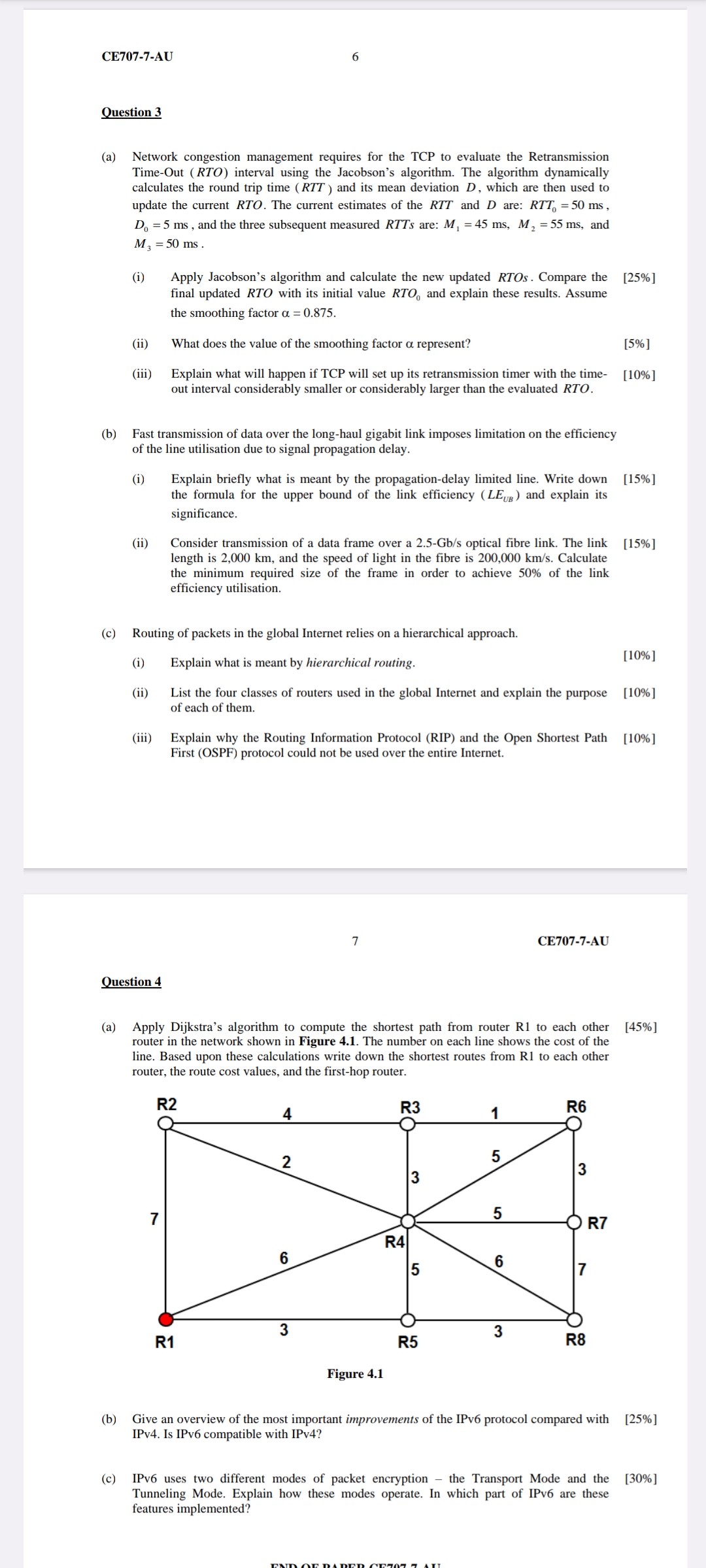Answered step by step
Verified Expert Solution
Question
1 Approved Answer
Question 3 ( a ) Network congestion management requires for the TCP to evaluate the Retransmission Time - Out ( RTO ) interval using the
Question
a Network congestion management requires for the TCP to evaluate the Retransmission
TimeOut RTO interval using the Jacobson's algorithm. The algorithm dynamically
calculates the round trip time and its mean deviation which are then used to
update the current RTO. The current estimates of the and are:
and the three subsequent measured RTTs are: and
i Apply Jacobson's algorithm and calculate the new updated RTOs. Compare the
final updated RTO with its initial value and explain these results. Assume
the smoothing factor
ii What does the value of the smoothing factor represent?
iii Explain what will happen if TCP will set up its retransmission timer with the time
out interval considerably smaller or considerably larger than the evaluated RTO.
b Fast transmission of data over the longhaul gigabit link imposes limitation on the efficiency
of the line utilisation due to signal propagation delay.
i Explain briefly what is meant by the propagationdelay limited line. Write down
the formula for the upper bound of the link efficiency and explain its
significance.
ii Consider transmission of a data frame over a optical fibre link. The link
length is and the speed of light in the fibre is Calculate
the minimum required size of the frame in order to achieve of the link
efficiency utilisation.
c Routing of packets in the global Internet relies on a hierarchical approach.
i Explain what is meant by hierarchical routing.
ii List the four classes of routers used in the global Internet and explain the purpose
of each of them.
iii Explain why the Routing Information Protocol RIP and the Open Shortest Path
First OSPF protocol could not be used over the entire Internet.
Question
a Apply Dijkstra's algorithm to compute the shortest path from router R to each other
router in the network shown in Figure The number on each line shows the cost of the
line. Based upon these calculations write down the shortest routes from R to each other
router, the route cost values, and the firsthop router.

Step by Step Solution
There are 3 Steps involved in it
Step: 1

Get Instant Access to Expert-Tailored Solutions
See step-by-step solutions with expert insights and AI powered tools for academic success
Step: 2

Step: 3

Ace Your Homework with AI
Get the answers you need in no time with our AI-driven, step-by-step assistance
Get Started


